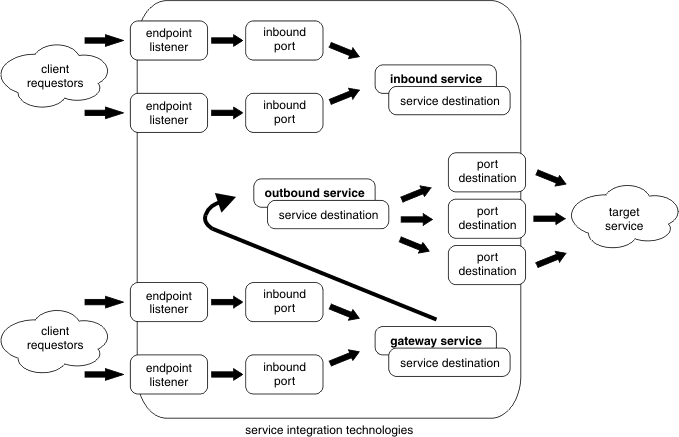Configure web services for a service integration bus
Take an internally-hosted service available at a bus destination, and make it available as a web service; Take an externally-hosted web service, and make it available internally at a bus destination; Use the web services gateway to map an existing service - either an inbound or an outbound service - to a new Web service that appears to be provided by the gateway.
In figure 1, a client request is received by an endpoint listener then passed through an inbound port to an inbound service destination. An outbound service destination passes a request through an outbound port to an external service.
In figure 2, a client request is received by an endpoint listener, then passed through an inbound port to an inbound service destination. An outbound service destination passes a request through an outbound port to an external service, and a gateway service resembles an inbound service and maps to an outbound service.
Figure 1. Inbound, outbound and gateway services

Through service integration bus-enabled web services we can achieve the following goals:
Tasks
- Create an inbound service: Take an internally-hosted service available at a bus destination, and make it available as a web service.
- Create an outbound service: Take an externally-hosted web service, and make it available internally at a bus destination.
- Create a gateway service: Use the web services gateway to map an existing service - either an inbound or an outbound service - to a new Web service that appears to be provided by the gateway.
Subtopics
- Make an internally-hosted service available as a web service
- Make an externally-hosted web service available internally
- Work with the web services gateway